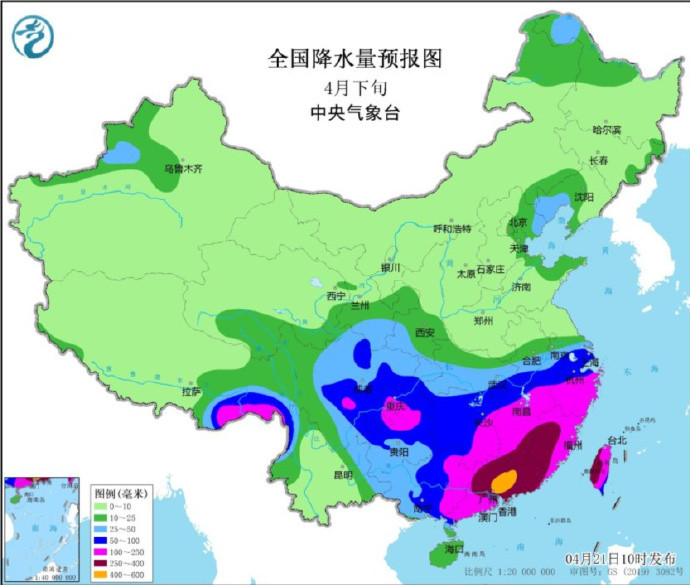Southern China's densely populated Pearl River Delta is grappling with severe flooding following record-breaking rains, sparking concerns about the region's defenses against increasingly intense deluges induced by extreme weather events. Guangdong province, once dubbed the "factory floor of the world," has been battered by unusually heavy, sustained, and widespread rainfall since Thursday, with powerful storms ushering in an earlier-than-normal start to the province's annual flooding season.
The heavy rains have forced more than 82,500 people to be relocated, according to state media reports citing local government sources. At least 11 people are missing, including six from the town of Jiangwan near Shaoguan city in the province's mountainous north, where landslides triggered by the downpours have injured six people, state-run news agency Xinhua reported on Monday.
In Qingyuan, a city of 4 million residents, people are counting their losses. Huang Jingrong, a 61-year-old farmer, told Reuters, "My rice fields are fully flooded, my fields are gone. I won't be making any money this year, I will be making losses." Huang estimated his losses at about 100,000 yuan ($13,800) and lamented that he would not be reimbursed for his losses.
Over the weekend, waterways in Guangdong overflowed, including the river near Huang's village, where flood-waters have reached the second story of houses after washing out paddy and potato fields. In other parts of Qingyuan, rescuers tackled neck-high waters to extract residents, including an elderly lady trapped in waist-deep water in an apartment building.
Lin Xiuzheng, an online retail sales worker and Qingyuan resident, noted that before 2022, it rarely rained as heavily as it does now, and the flood-waters were never as high. Scientists attribute the increasing intensity and unpredictability of weather events in China to global warming, with record-breaking rainfall and drought assailing the world's second-largest economy, often simultaneously.
Precipitation records for April have been broken in many parts of Guangdong, with the cities of Shaoguan, Zhaoqing, and Jiangmen to the west and north of Guangzhou also half-submerged in flood-waters. The downpours have killed four people, and 10 others remain missing in the province as of Monday, Xinhua reported. Across Guangdong, 36 houses collapsed while 48 were severely damaged, resulting in a direct economic loss of nearly 140.6 million yuan.
Despite the widespread flooding, two companies, Camelot PCB, a print circuit board company that supplies Tesla and other electric vehicle makers, and Polyrocks Chemical, a plastics company that supplies technology giants such as Apple, Huawei, and Samsung, told Reuters that their operations were not affected, and everything was running as usual.
However, many rivers in the region remained swollen on Monday, with water levels above safety thresholds and rainfall in recent days two to three times more than normal for this time of year. Chinese meteorologists attributed the intense convective weather in southern China to a stronger-than-normal subtropical high, a semi-permanent high-pressure system circulating north of the equator. The subtropical high led to warmer temperatures that drew in more moisture-laden air from the South China Sea and the Bay of Bengal, resulting in the intense precipitation.






